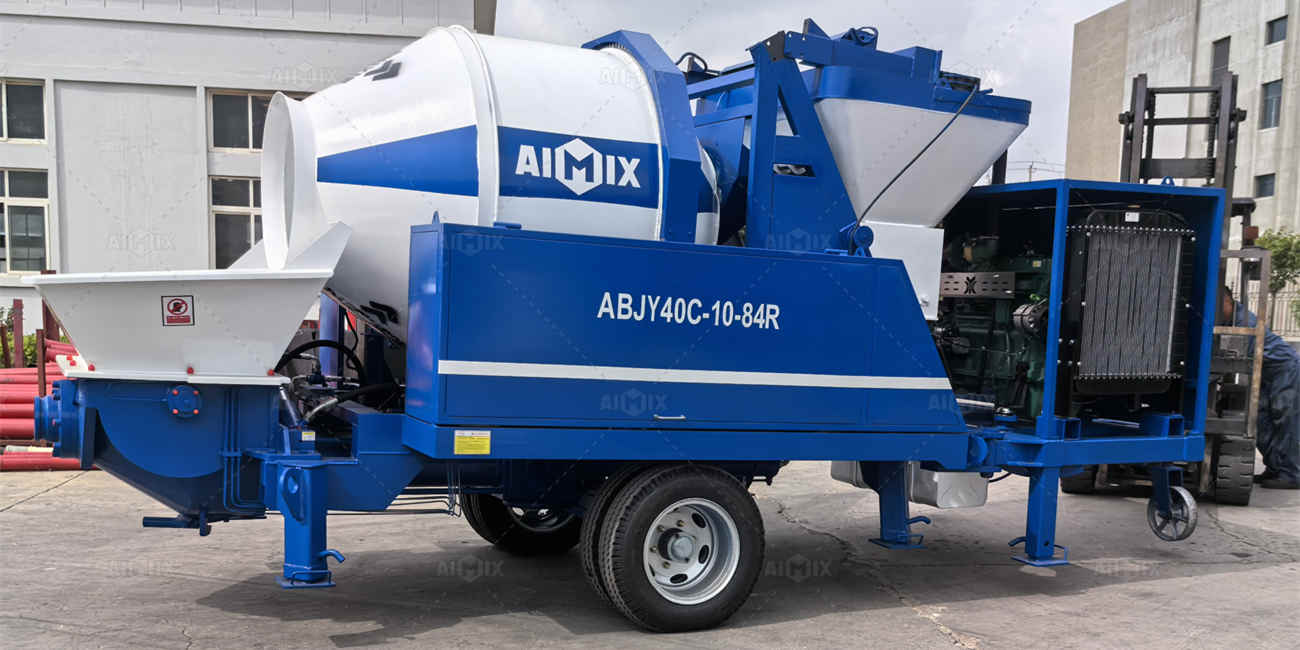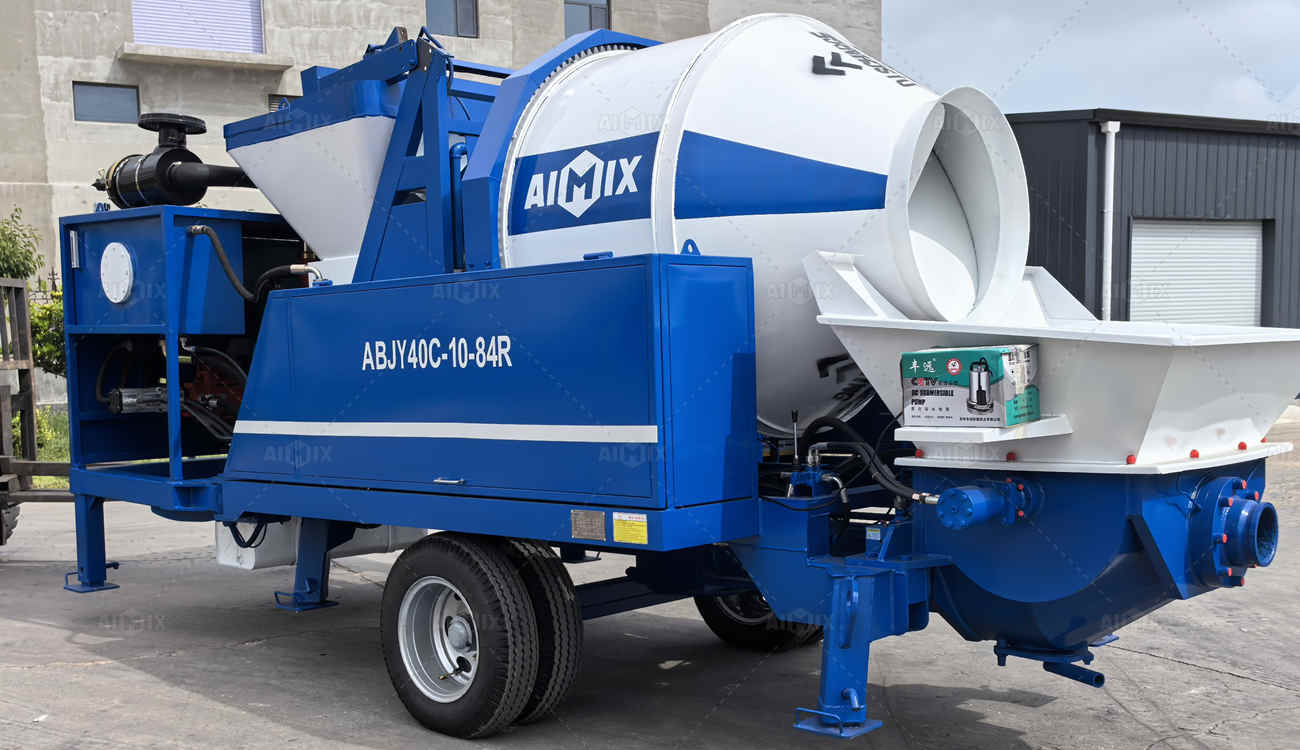A mobile concrete pump is an essential piece of equipment for many construction projects, providing the flexibility to move around the site and deliver concrete to hard-to-reach places. However, to maximize its effectiveness and ensure safety, it’s crucial to maintain its stability throughout the operation. Stability issues can lead to costly delays, reduce productivity, and compromise safety, potentially causing accidents or damage to the machinery.
In this guide, we’ll cover key strategies and best practices to keep a mobile concrete pump stable during operation. From proper site preparation to regular maintenance, these tips can help you achieve a safer, more efficient concrete pumping process.

Choose the Right Site Location
Proper site preparation is critical to stabilizing a mobile concrete pump. When setting up the pump, select a level and firm surface to prevent tilting or sinking. Concrete pumps, especially when loaded with concrete, are heavy and can put immense pressure on the ground. A well-compacted, level surface minimizes the risk of instability and reduces the chance of the pump tipping over or shifting during operation.
If the ground conditions are less than ideal, such as sandy, muddy, or uneven terrain, it may be necessary to take extra precautions, such as placing wooden or metal pads under the outriggers to distribute the weight more evenly. For added stability on slopes, position the pump facing downhill to reduce the risk of tipping, and always adhere to the manufacturer’s guidelines regarding maximum slope angles.
Deploy Outriggers Correctly
Outriggers are a fundamental component of mobile concrete pumps, designed to enhance stability by extending the pump’s footprint and balancing its weight. To ensure that the outriggers provide maximum support, always extend them fully and place pads or blocks underneath each outrigger if necessary.
Each outrigger should be securely anchored to the ground to prevent shifting or sliding. Regularly check the pads or blocks for wear and tear, as damaged or uneven supports can compromise stability. Some mobile concrete pumps come with automated or hydraulic outriggers that make it easier to set up, but it’s still essential to verify that each outrigger is properly deployed before starting the pump.
Adhere to the Manufacturer’s Load Limits
Each mobile concrete pump has a specific load limit designed by the manufacturer like Aimix Group. Exceeding this limit can create significant instability and potentially damage the pump or the concrete hoses. Before starting the operation, confirm the load capacity of your mobile concrete pump and ensure that it aligns with the amount of concrete you plan to pump.
By staying within these load limits, you not only keep the equipment stable but also extend its operational lifespan. Operators should receive proper training on load limits and regularly communicate with other team members to ensure the concrete pumped does not exceed the specified capacity.

Regularly Inspect Tires and Brakes
Tires and brakes play a vital role in the stability of a mobile concrete pump. Worn-out or underinflated tires can compromise balance, while faulty brakes can affect the pump’s positioning, particularly on uneven surfaces. Conduct regular inspections of the tires to ensure they are inflated to the correct pressure and check for signs of wear or damage.
Additionally, the brakes should be fully functional to hold the mobile concrete pump in place during operation. Any sign of brake malfunction should be addressed immediately. Stability largely depends on the pump remaining stationary, so making sure the tires and brakes are in top condition is a crucial part of keeping the equipment safe and stable.
Control Boom Movements Carefully
The boom is an extension of the concrete pump used to deliver concrete precisely where it’s needed. However, improper handling of the boom can create instability, as the weight of the concrete flowing through it and the movement of the boom can shift the balance of the pump. Avoid fast or jerky movements, which can destabilize the mobile concrete pump, especially if it is positioned on an uneven surface.
Operators should be trained to use smooth, controlled movements when extending or moving the boom, and they should always be aware of the boom’s reach limitations to avoid overextending it. By keeping the boom close to the pump and avoiding extreme angles, operators can significantly improve stability and reduce the risk of tipping.
Monitor Wind Conditions
Wind can greatly impact the stability of a mobile concrete pump, particularly when using the boom to reach high or distant points. Strong gusts of wind can sway the boom, affecting the pump’s balance and increasing the risk of tipping. Before beginning the operation, always check the weather forecast for wind conditions and, if necessary, adjust the work schedule to avoid working during high winds.
If operating on a windy day is unavoidable, reduce the boom length and work at lower angles to minimize the impact of wind. Additionally, increase ground support by using additional stabilizing pads under the outriggers.
Regular Maintenance and Inspections
Routine maintenance is key to ensuring the stability and reliability of a mobile concrete pump. Maintenance checks should include a thorough inspection of key components, such as the outriggers, tires, brakes, and the boom. Addressing any signs of wear, leaks, or damage can prevent stability issues during operation.
Conducting daily inspections before starting the pump ensures that all parts are in proper working condition. Regularly inspect hydraulic systems, hoses, and connections for leaks or signs of damage, as any weakness in these components can compromise stability and the pump’s ability to perform safely.
Provide Proper Operator Training
Stability often depends on the skill and knowledge of the operator handling the mobile concrete pump. Ensuring that all operators receive proper training can minimize the risk of accidents, improve operational efficiency, and increase safety. Operators should be well-versed in setup procedures, load limits, boom handling, and emergency protocols.
An experienced operator is more likely to recognize potential stability issues before they become a problem and can take proactive measures to secure the equipment. Training should also cover the importance of stability checks and safety procedures, enabling operators to handle unexpected situations effectively.
Utilize Technology for Monitoring Stability
Some modern mobile concrete pumps come equipped with stability monitoring systems, which can alert operators to potential stability issues in real time. These systems often use sensors to monitor the angle, load distribution, and ground pressure, providing feedback to the operator.
If your pump has these features, make sure operators are trained to interpret the data and respond appropriately. Utilizing technology to monitor stability can provide an added layer of safety, allowing operators to address issues promptly and prevent accidents.
Maintain Clear Communication with the Team
Clear communication is essential on any construction site, especially when operating large machinery like a mobile concrete pump. Operators and ground crew should be in constant communication, ensuring that everyone is aware of the pump’s positioning, movement, and any potential stability concerns.
Having a designated spotter can also help guide the operator when positioning the pump or adjusting the boom. Effective communication minimizes the risk of misunderstandings or accidents, which can compromise stability.
Conclusion: Ensuring Stability for Safe and Efficient Operations
Keeping a mobile concrete pump stable during operation requires a combination of proper setup, careful handling, regular maintenance, and adherence to safety protocols. By choosing the right location, correctly deploying outriggers, monitoring load limits, and maintaining the equipment, contractors can achieve optimal stability and safety.
Following these best practices will not only help keep the mobile concrete pump stable but also improve efficiency, reduce operational costs, and enhance site safety. Stability is essential to ensure that the concrete pumping process is smooth, precise, and safe, ultimately leading to more successful construction projects and long-lasting machinery.